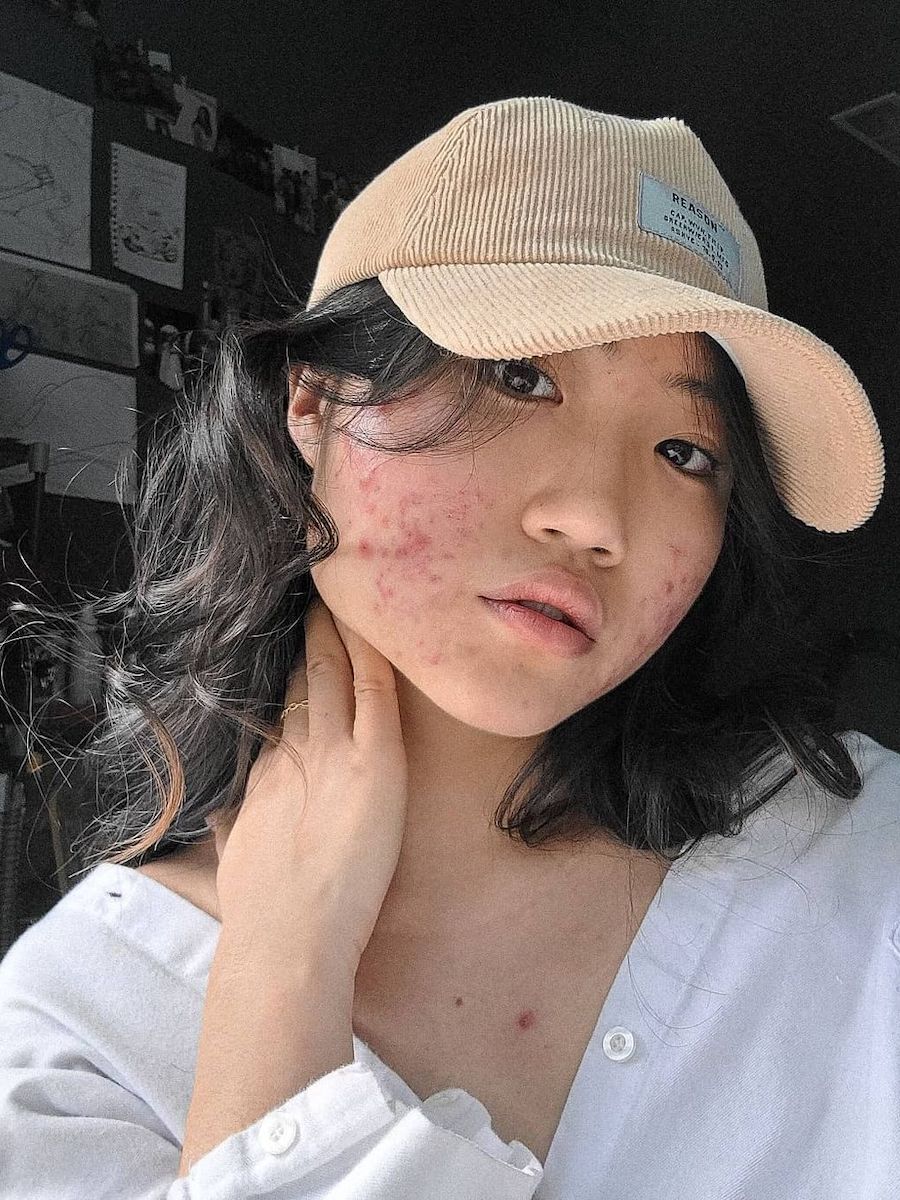
April 19, 2021 at 06:00AM
It will come as no surprise to learn that I’ve always loved beauty products. As soon as I hit secondary school I’d spend my pocket money on magazines—Bliss, J-17, CosmoGirl, I’d buy them all—because I was totally obsessed with the beauty pages inside, especially the skincare tips. You see, when you’re dealing with acne as a teenager you become somewhat preoccupied with your complexion, and I was a teen on an acne-busting mission. Of course, being the early noughties, there wasn’t the plethora of online information that there is now so I relied on magazines to educate me on which products would rid my skin of spots—and that meant a heck of a lot of Clearasil. Despite a lot of promising marketing jargon, nothing really worked. As a teenager your hormones are going haywire and, for me, acne is something that has stuck around into adulthood. In my late teens I caved and asked my GP to put me on a brand of contraceptive pill that I’d heard could help to clear your skin up but it still didn’t have the miraculous results that I craved, merely keeping my blemishes to a manageable minimum. And by then I had already been left with scarring and pigmentation due to some pretty intense breakouts in my younger years.
All this to say, if you have acne and are reading this piece then I totally get it. There is a kind of fervour that comes with facing daily breakouts that can feel exhausting: constantly researching, seeking advice and spending money on new products that you hope will finally be the ones to make a difference to your skin. But it doesn’t have to be that way. With over 150,000 posts on Instagram, the #skinpositivity hashtag is a celebration of skin in all its forms with people like Jenny Yu and Cydney showing that acne doesn’t have to be covered up. As someone whose confidence has always been intrinsically linked to the state of my skin, the discovery has felt like a breath of fresh air.
So, while I can’t promise that this skincare routine will rid your skin of acne entirely or transform your complexion overnight—and neither am I telling you that it should if you’re more than happy with your skin as it is—I can promise you that it’s more than just jargon. In fact, the entire routine is advised and approved by a woman who really knows her stuff, Dr Anita Sturnham MD—a GP specialising in skin health.


ADVERTISEMENT
ADVERTISEMENTKate Spade Autumn/Winter Sale |

“Use a gentle cleanser to keep your skin looking fresh and radiant and try to avoid foaming cleansers that can strip the skin of its essential oils. Choose products which are non-comedogenic (they won’t clog pores) and while breakouts are significant then look for ingredients like salicylic acid or lactic acid in a cream or gel formulation.”


“Use a rebalancing toner to restore your skin’s natural PH levels, tighten your pores and prepare the skin for your active skincare treatments. This cleansing and toning regime will help with oil control and to unblock clogged pores, as well as prepare your skin so that your next step absorbs deeper and works more effectively.”


“Typically, I will add a prescriptive item into the mix here, such as Duac—a prescription-only product that contains benzoyl peroxide and clindamycin. This dream duo works in synergy to dampen down inflammation. You will need to see your doctor for a prescription, but I highly recommend using this type of product in the acute phase. If skin is prone to dryness, I also recommend using a hydrating serum on top. Look for serums packed full of nourishing and hydrating ingredients but avoid oils, as these can clog your pores and make your breakouts worse. I recommend serums rich in hyaluronic acid and ingredients like zinc, magnesium and copper. Once breakouts are calmer, I’d suggest a serum that protects against environmental aggressors but also helps to reduce the inflammatory pigmentation, left behind after breakouts.”


“Finally, apply a protective, hydrating and non-pore clogging moisturiser over the top of your serum. This acts as a protective barrier for your skin and locks in moisture to keep the skin hydrated and its barriers strong. Whilst we know SPF protection is essential for prevention of UV damage and premature ageing, when it comes to acne skin, less is more. Skin is likely to purge and product overload won’t do your skin any favours so look for a mineral-based SPF which are generally more pore-friendly”

ADVERTISEMENT
ADVERTISEMENTSports Direct Free Delivery on All Orders! |

“Add in your retinoids here. Retinoids have been extensively studied for more than 30 years, and their collagen-building and acne-fighting properties are well documented. Adding in a retinoid serumhelps to reduce pore inflammation, regulates sebaceous gland activity, speeds up cell repair and treats post inflammatory hyperpigmentation—the dark spots you are left when spots heal.”


“Often the morning moisturiser is adequate for acne sufferers, particularly if you’re using a good serum underneath. Again, avoid heavily oil-loaded products and look for natural emollients such as safflower, jojoba, squalane. I also love using peptides and hyaluronic acid in an evening moisturiser.”


“Once a week use an exfoliator to remove dead skin cells from the top layers of the skin and encourage healthy new cells to reach the surface. This will give you a radiant complexion and reduce the risk of pesky skin cells clogging your pores. I recommend ingredients such as pyruvic acid, salicylic acid and lactic acid. However, avoid strong exfoliants if your skin is feeling sensitive or inflamed.”


Author Mica Ricketts | Whowhatwear
Selected by CWC
ADVERTISEMENT
ADVERTISEMENTUp to 30% off Gift Sets |






